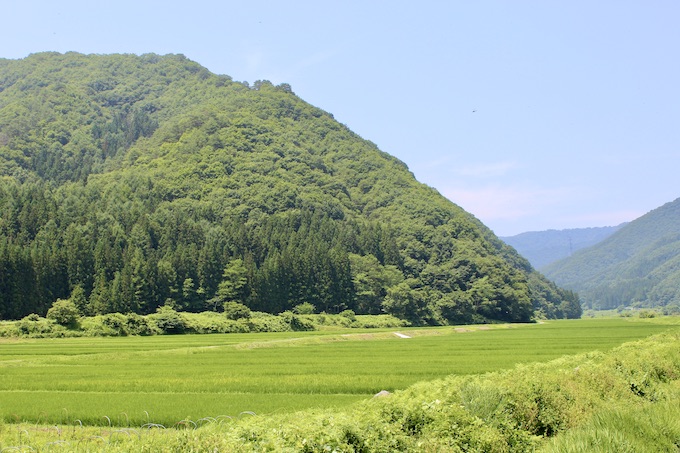
At the end of July, I visited Showa village, Oku-aizu, Fukushima Prefecture.
The village is called “Village of Karamushi-ori (false-nettle cloth)” where Karamushi (false-nettle) has been cultivated for more than 600 years.
Karamushi is the nettle family, also known as “choma or “chidimi.
Linen threads used for the material of Odiyachidimi and Echigojofu of Niigata are also made from Karamushi of Showa village.
I was able to watch “reaping”, “skinning” and “ohiki (process to take out fibres from choma)” which are performed between mid-July and mid-August.
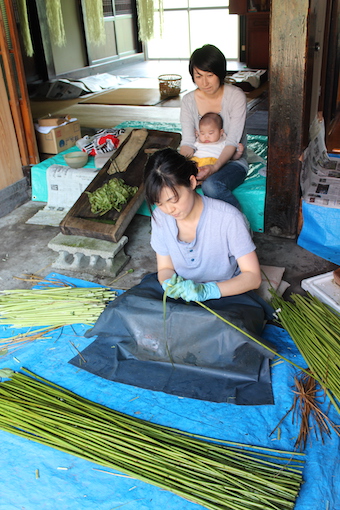
Ms. Yukiko FUNAKI who guided me and Ms. Etsuko WATANABE who showed me around the workshop this time.
They were not born and raised in Showa village but came to this place fascinated by Karamushi-ori.
And even after the training of Karamushi-ori is completed, they have kept living in the village trying to save and hand down Karamushi-ori.
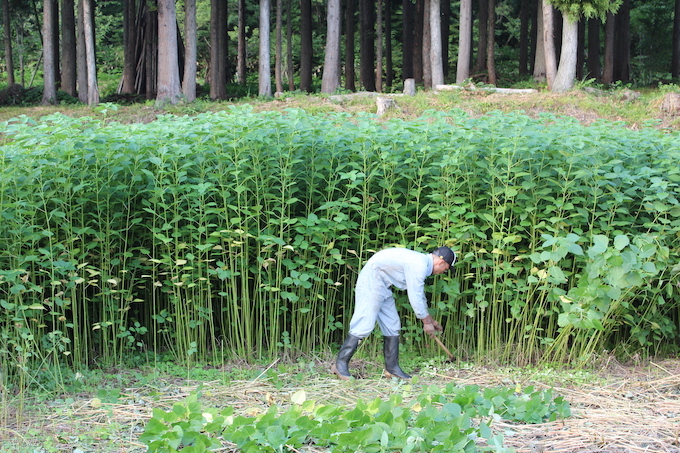
First of all, they took me to a place where Karamushi were being reaped. The work is done only by men and it was Etsuko’s husband, Mr. Fumihiro Watanabe who was in the process of the work.
He was reaping Karamushi grown high up in the sky fervently.
Karamushi, which is perennial, produces new shoots after reaping.
And in the next year after reaping the grown Karamushi, the new shoots come out again and so on. To avoid soil from trodden down and harming the roots, no one but a person to reap will enter into the sacred field.
In this way, Karamushi of high quality is carefully preserved and handed down.
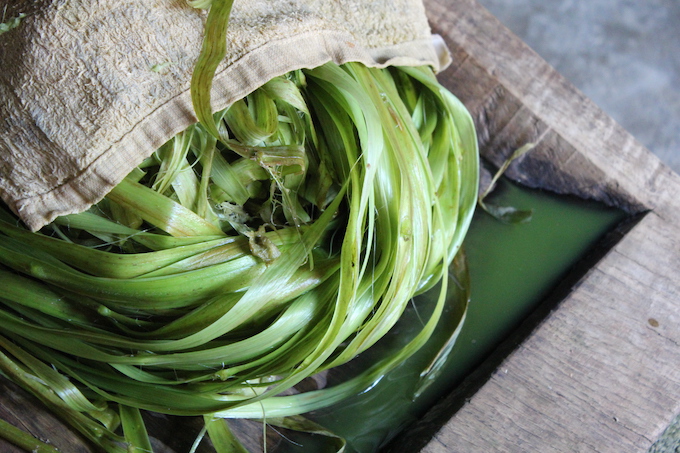
The reaped Karamushi are left with just stems and are cut in the specified length.
They are immersed in clear water overnight and then the skin is peeled into two pieces.
Up to here is a man’s job (basically the husband, as a share in the family).
And from here, the baton is passed to woman (wife).
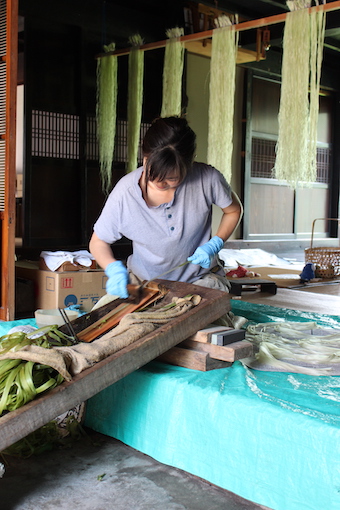
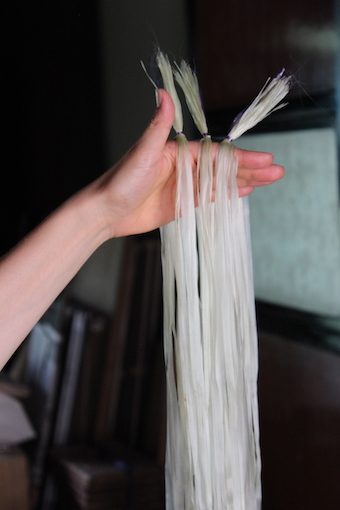
Whoosh, Whoosh. It was a pleasant sound and the smell of green grass filled in the workshop delivered a refreshing breeze from my nasal cavity to the brain.
On the Ohiki board, the epidermis of the grass is scraped off using a spatula called “Ohikigo” which has an iron edge.
The faint green fibres then appear and give off a pearly sheen.
People of Showa village call this sheen “Kira” with affection and pride.
After the work for the summer is over, they will move on to the thread making called “Oumi” and handloom-weaving in fall.
Also, on Shoman in May, one of the twenty-four seasons, they will do “Yakihata” which they lay straws on the Karamushi field and burn them.
It is one of the important work to control the outbreak of pests and to align the timing of Karamushi’s germination.
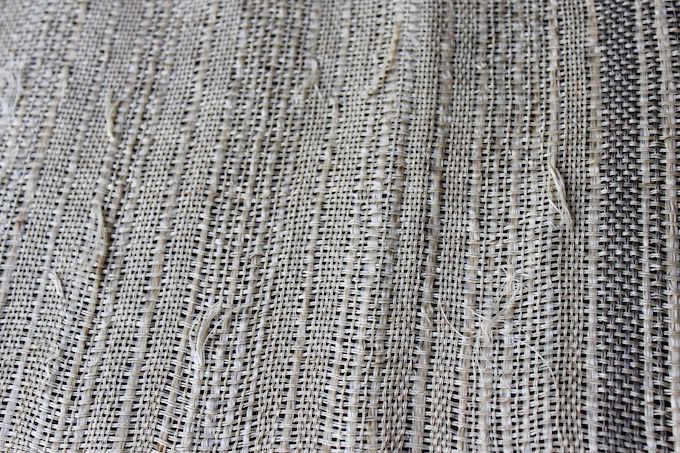
Various things are connected in Showa village.
They are cycle of seasonal work all of which are indispensable, and traditional methods that have been inherited from ancient times.
The work allocated within the family is passed from men to women, and from parents to children.
Karamushi-ori born in this way looks refreshing with leaving the trace of grass and yet powerful even after it turned to a cloth.
Yukiko and Etsuko are thinking about ways to reach out to us in other forms, not just kimono textile and obi.
They told me that they coordinated Fukusa made of Karamushi-ori with Bernard Leach’s tea utensils at a tea party before.
“I thought it was compelling even with Bernard Leach’s tea utensils.” Yukiko told me with her eyes shining and I was very much struck by her confidence.
